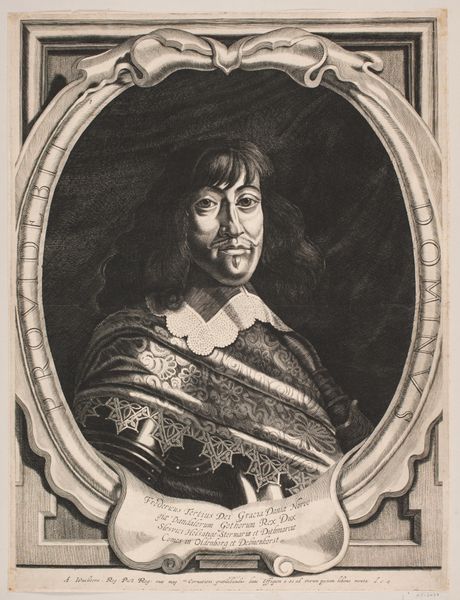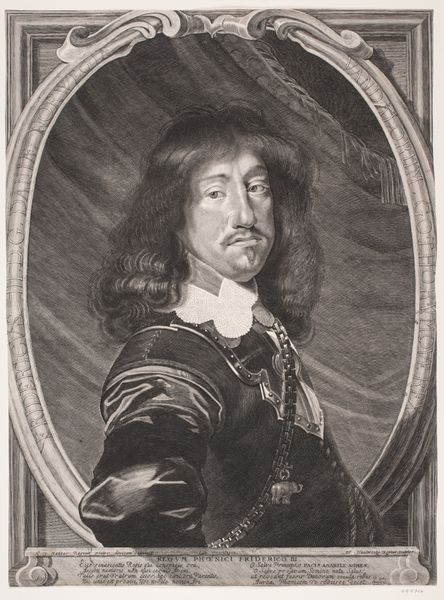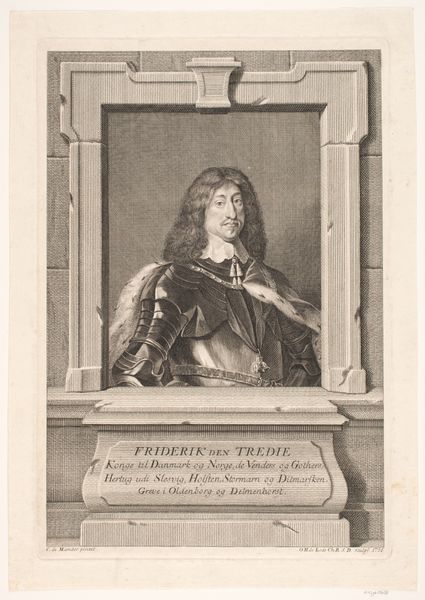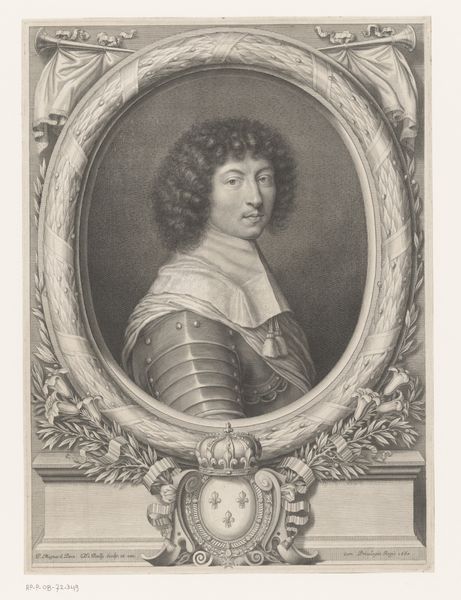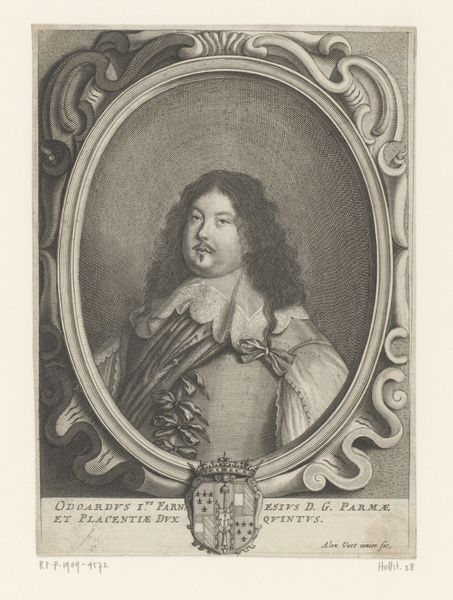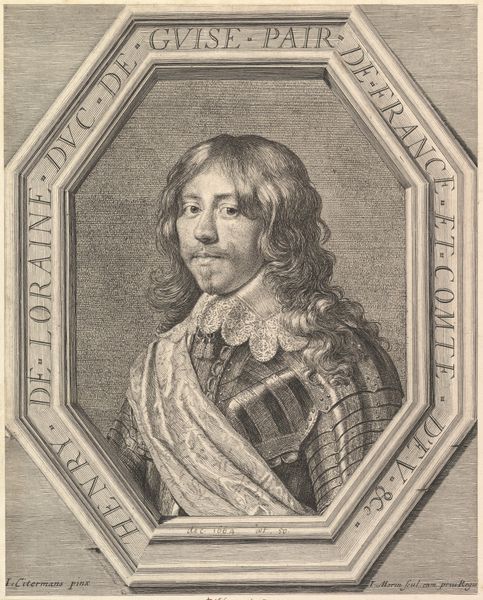
print, engraving
#
portrait
#
baroque
# print
#
form
#
line
#
engraving
Dimensions: 563 mm (height) x 418 mm (width) (bladmaal)
Editor: This engraving, "Frederik III," created between 1646 and 1649 by Albert Haelwegh, presents the Danish King in all his regal attire. It strikes me as quite formal and deliberate, but what kind of underlying message or meaning do you see here? Curator: Well, consider how portraits function, especially those of rulers. They're rarely just about likeness. This isn't just Frederik III; it’s about *kingship*. The oval frame itself is symbolic. It's a form of mandorla, often associated with religious icons. Does this give you any clue? Editor: It implies he wanted to be seen almost as a sacred figure, divinely appointed. Curator: Precisely. The elaborate costume also plays a key role. Notice the lace collar and the armour beneath the decorative cloak. These aren't mere fashion statements. The lace suggests refinement, even delicacy, qualities that temper the brute strength implied by the armour. How do these symbols play against one another? Editor: So, it's communicating that he's both powerful and cultured, suggesting a ruler who’s both a warrior and a man of intellect. Curator: Yes. Also, consider where this portrait would have been displayed. It was about projecting power, yes, but also creating a *memory*. An idealized image for the ages. Think about how images like this shaped and reinforced the public’s perception of the monarchy. Editor: That makes sense. It’s much more than just a picture. It’s about creating and solidifying a specific cultural memory. I will never look at portraits in the same way! Curator: Exactly! It's understanding how symbols shape not only the present but also future understanding.
Comments
No comments
Be the first to comment and join the conversation on the ultimate creative platform.
